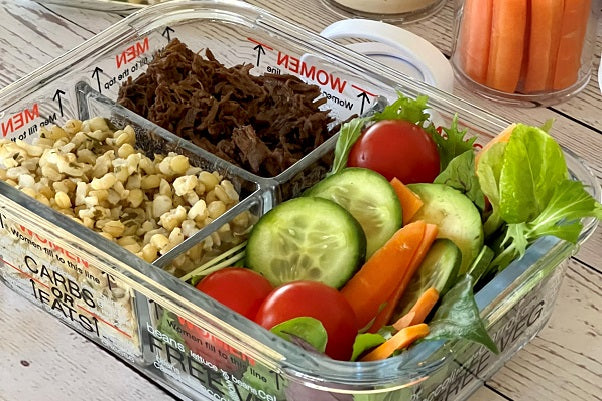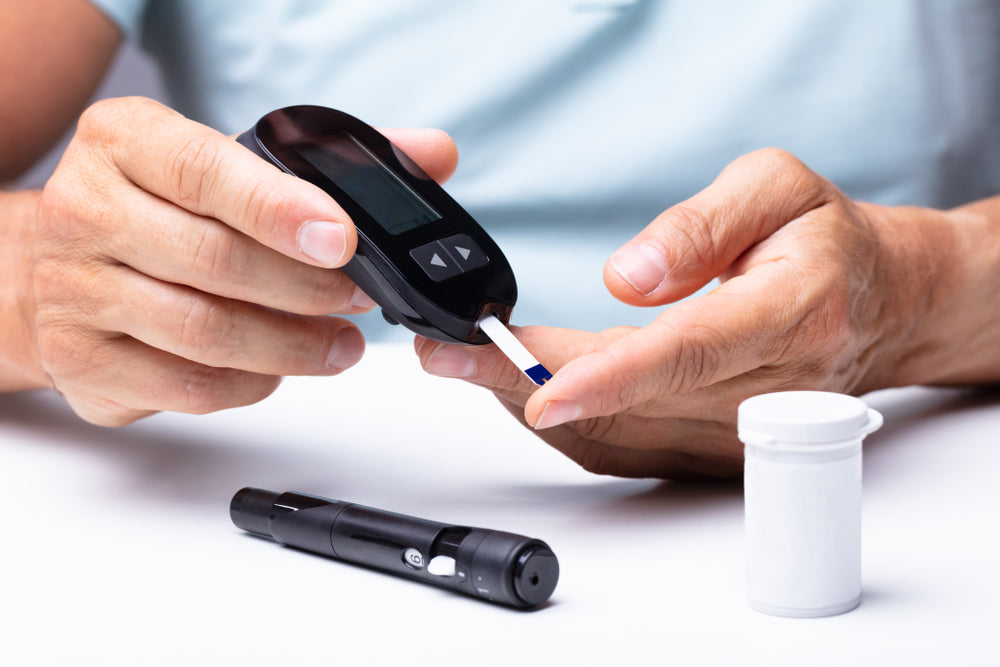-
Mastering Meal Prep with the Portion Perfection Porti-Prepper
Amanda Clark is an Advanced Accredited Practising Dietitian at Great Ideas in Nutrition and creator of the Portion Perfection range. She’s kindly written a how-to for those wanting to get the best from her wonderful products. If you've ever found yourself struggling with portion control or navigating the complexities of managing diabetes through diet, then the Porti-Prepper could become your new best friend. It... -
Free Thermomix Cooking for Diabetes recipe: Shredded chicken noodle salad with green miso
Try this free Shredded chicken noodle salad with green miso recipe from the Thermomix Cooking for Diabetes. With a focus on wholefoods and unprocessed ingredients, this book includes 70 delicious recipes covering every occasion from breakfast lunch, dinner to entertaining and sweets. -
Comparing portions, serving sizes and serves
Comparing portions, serving sizes and serves By Dale Cooke Accredited Practising Dietitian Most people treat a whole apple as one serve, but if it was a processed and packaged food, the manufacturer might choose to call it one-and-a-half serves. Sounds silly, doesn’t it? But packaging serving sizes aren’t always logical. What is the difference between a portion, a serving size and a serve? Portion... -
Vision loss and diabetes
Your eyes are at work from the moment you wake up, to the moment you close them to go to sleep. Your vision allows you to be aware of your surroundings, and 80% of everything you learn is through your sight. For people living with diabetes, vision loss is a major complication. It can cause both short- and long-term eye problems. The risk of... -
Motivation for exercise in Winter
It’s quite easy to feel hostage to your bed on those cold Winter mornings. The alarm goes off, but you hit snooze and you snuggle back under the covers. Likewise, as the sun starts to set and the temperature drops, your afternoon walk feels less appealing. So how can you maintain a regular exercise routine when the weather is a little cooler? With a... -
Blood Glucose Monitoring
Self-monitoring your blood glucose levels (BGLs) is an important part of managing diabetes because keeping your BGLs in target range helps lower your risk of diabetes-related complications. One of the most important, and often frustrating, factors in managing diabetes is understanding what makes your BGLs go up and down. Food, exercise, stress, medications and illness are just some of the things that can have... -
Heart Health, Diet and Diabetes: What You Need to Know
If you have diabetes, you are at an increased risk for developing heart disease. This is also referred to as cardiovascular disease (CVD) or coronary disease, and can lead to heart attacks and strokes. When blood glucose levels remain high for prolonged periods of time, it can damage blood vessels and lead to serious heart complications. Additionally, cholesterol and high blood pressure can also... -
7 Ways to Eat Healthy When Back at Work
In theory, eating healthy food every day at the work or home office should be simple. Pack a healthy lunch and away you go. However, in reality it may not be that easy. Work stress and/or access to unhealthy foods, can easily sabotage our healthy eating habits and impact blood glucose levels. The good news is that there are ways to get around it.... -
The Best Diabetes Cases For Everyday Use
If you have diabetes or know someone with diabetes, it may feel like you are packing for an Arctic expedition every time you leave the house! Unfortunately, when living with diabetes, you cannot simply leave the house with your keys, mobile and wallet/purse, there is so much more planning involved. Blood glucose meter, test strips, alcohol wipes, insulin, lancets, test strips, hypo kit.... the... -
How Good is Physical Activity for Type 2 Diabetes?
If you have Type 2 Diabetes, have you ever considered what type of exercise is best for your blood glucose levels? The good news is that there is now evidence to suggest that both aerobic exercise training e.g. walking and resistance exercise training i.e. strength training, lead to improvements in blood glucose control. The study published in Medicine & Science In Sports & Exercise... -
Feet First with Diabetes
If you live with diabetes you are at a higher risk of experiencing problems with your feet. This is because diabetes can damage the nerves and blood supply in your extremities, specifically your legs and feet. Nerve damage makes it hard to feel sensation in your feet which means you might not notice a pressure injury, blister, corn or callous. Pain is one way... -
15 Easy Food Swaps for Diabetes
Forget strict diets, healthy eating for diabetes is all about making healthy choices that are sustainable. One of the best places to start is by making simple food swaps to your meals and in your favourite diabetes recipes. Here are 15 ideas below that will be sure to suit the whole family. Swap: High sugar, rich fruit yoghurts for plain, natural low-fat Greek yoghurt...















